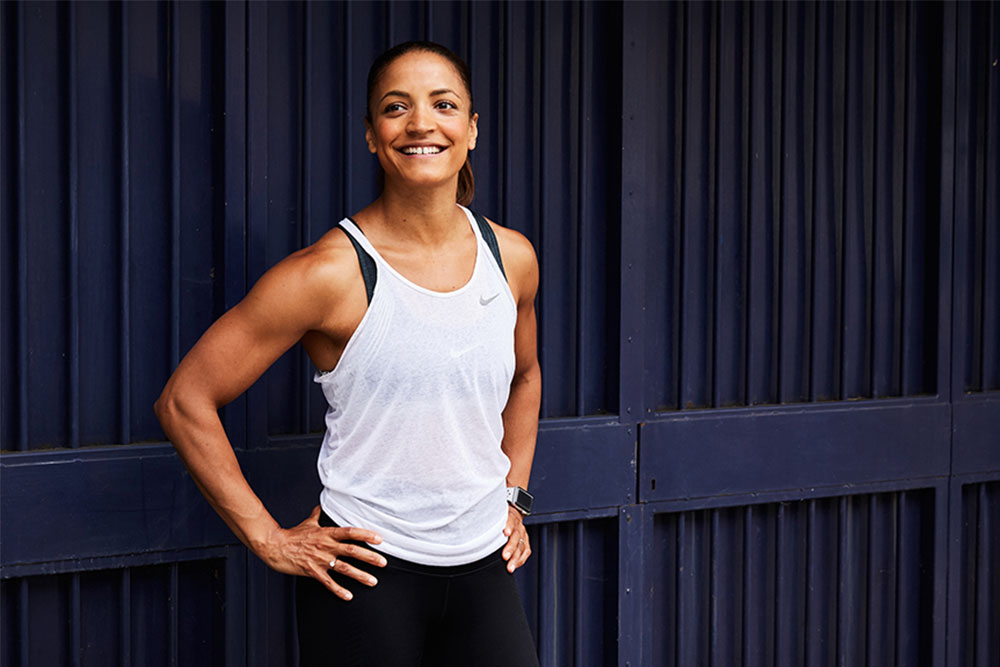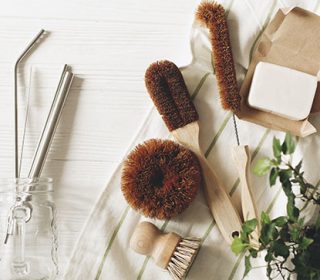The best exercise to do – according to your menstrual cyle

With 16 years experience as a personal trainer and sports therapist, Nike Global Master Trainer Joslyn Thompson-Rule is here to prove that exercise and training can be tailored to your hormones and cycle.
How? With a little help from Moody Month, the app that syncs you up with your moods and cycles to help you improve your down days and power up your best.
Joslyn and Lola Ross, Moody Month‘s nutritionist, have broken down the menstrual cycle into five stages to help you become equipped to make optimal decisions every month.
MENSTRUAL BLEED PHASE
At the start of the cycle, hormones are at their lowest, which can lead to a dip in energy levels. Lola suggests supporting cellular energy with plenty of filtered water and nutrient-rich foods that keep energy and blood sugar levels steady. A good mix of unprocessed proteins, healthy fats and low GI complex carbohydrates can help support energy metabolism and keep you motivated.
The start of the cycle is very different for each woman. “Some women feel amazing and happy to train, others want to curl up with a hot water bottle. Get to know what your body needs at this time and honour it,” says Joslyn.
“Your oestrogen levels are slowly starting to rise, allowing you to train at a higher intensity with a lower risk of overtraining – so adding in an extra session or a little more intensity if you are feeling good, is ok. Your body is more insulin sensitive during the early follicular phase, so it uses carbohydrates more efficiently”.
LATE FOLLICULAR PHASE
With rising oestrogen at this time, Lola says that some women find that they have more energy, focus and willpower, so it’s a good opportunity to take your healthy eating plan to the next level.
During the follicular phase, many women have a higher pain tolerance. Joslyn suggests making the most of it by pushing your body a little harder, within reason. “Increased oestrogen levels towards the end of the follicular phase can affect collagen metabolism, leading to increased laxity in the joints. This increases risk of injury, even though you will be feeling fit and strong – so take extra care to warm up and move with good form.”
OVULATION
Oestrogen is at high levels during this time and it is important for the body to remove oestrogen once it’s done its work. Lola warns that excess circulating oestrogen can have a negative impact on our health, exacerbating symptoms such as PMS. “Exercise can be really helpful here as it is an integral part of maintaining healthy circulation and healthy gut motility – both of which support detoxification and oestrogen balance”.
The good news is that according to Joslyn “you may feel at your physical peak around ovulation when oestrogen levels are peaking; this is a great time for personal bests or to hit some of those physical goals you have been working on”.
EARLY LUTEAL PHASE
According to Lola, this is a good time of the month to cut down on caffeine, alcohol or artificial energy drinks as these stimulants can aggravate PMS-triggered anxiety and interfere with the absorption of essential vitamins and minerals required for energy production. This week you could swap stimulant beverages for sparkling fruit water, herbal teas or an alcohol-free cocktail.
Joslyn says that the early luteal phase marks the start of more aerobic based training, “increased insulin resistance means your body will struggle to store glucose properly so your body will fuel workouts via fat stores”.
Unfortunately, “your time to fatigue is quicker during this phase so ensure you listen to your body and schedule regular rest breaks or work at a manageable pace”.
LATE LUTEAL PHASE
During the later luteal phase, Joslyn says that “excess water during the late luteal phase may make training a little uncomfortable – choose an exercise that is not too restrictive movement-wise like swimming or cycling.
“Energy levels will continue to fall during this phase but movement and blood flow are still important – walking, yoga or mobility for even as little as 10 minutes will be an added boost.
“Lowering oestrogen levels also mean lower pain tolerance so adding in a meditation or breathing practice may help with increased sensitivity to menstrual cramps”.












